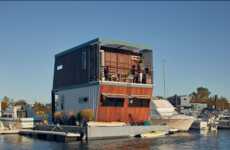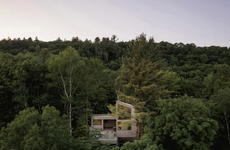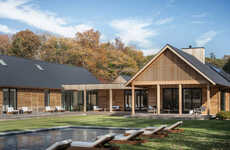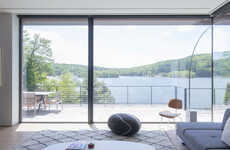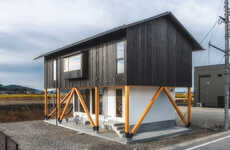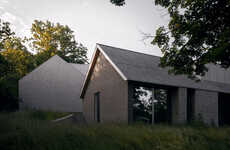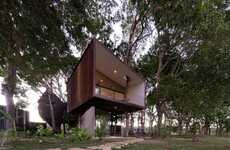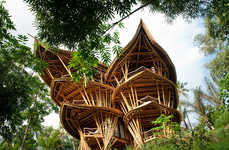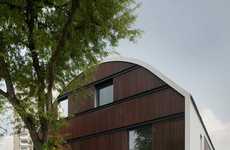
The Floating House is Situated on Lake Huron
Vasiliki Marapas — July 12, 2014 — Art & Design
References: mos-office.net & contemporist
MOS Architects designed the Floating House on Lake Huron in Ontario, Canada.
The home's location raised certain challenges for the architects in terms of fabrication, construction and the structure's relationship to the site. Specifically, Lake Huron is subject to varying water levels, thanks to seasonal changes and global environmental fluctuations. Moreover, the remoteness of the island posed another set of restrictions. To circumvent these difficulties, the architects worked with contractors to create pre-fabrication and construction processes that diminished costs of transportation. For instance, the steel platform was built first and towed to the lake from the contractor's shop.
The finished vernacular home is complete with cedar sliding, and a rainscreen envelope of cedar strips that filters light in the interior spaces, encloses exterior spaces and reduces the effects of wind and heat.
The home's location raised certain challenges for the architects in terms of fabrication, construction and the structure's relationship to the site. Specifically, Lake Huron is subject to varying water levels, thanks to seasonal changes and global environmental fluctuations. Moreover, the remoteness of the island posed another set of restrictions. To circumvent these difficulties, the architects worked with contractors to create pre-fabrication and construction processes that diminished costs of transportation. For instance, the steel platform was built first and towed to the lake from the contractor's shop.
The finished vernacular home is complete with cedar sliding, and a rainscreen envelope of cedar strips that filters light in the interior spaces, encloses exterior spaces and reduces the effects of wind and heat.
Trend Themes
1. Floating Homes - Designing and constructing homes that can adapt to fluctuating water levels and remote locations offers opportunities for disruptive innovation in the housing industry.
2. Pre-fabrication - Developing efficient pre-fabrication and construction processes can help reduce costs, transportation challenges, and environmental impact.
3. Sustainable Design - Creating homes with features like a rainscreen envelope and sustainable materials like cedar offers opportunities for disruptive innovation in the architectural and construction industries.
Industry Implications
1. Housing - Innovations in floating homes and cost-effective construction processes have the potential to disrupt the housing industry.
2. Construction - Developing pre-fabrication techniques and sustainable design practices can disrupt traditional construction methods and provide more efficient solutions.
3. Architectural Design - Designing homes with features that adapt to changing environments and incorporate sustainable materials can disrupt traditional architectural design approaches.
5
Score
Popularity
Activity
Freshness


